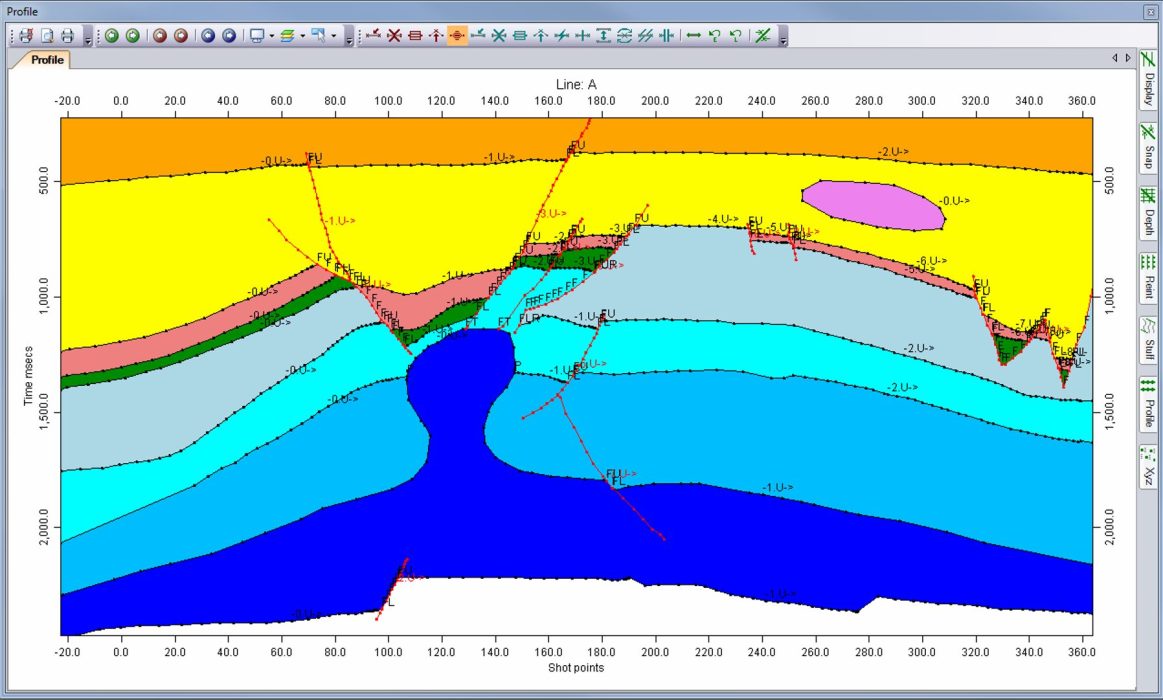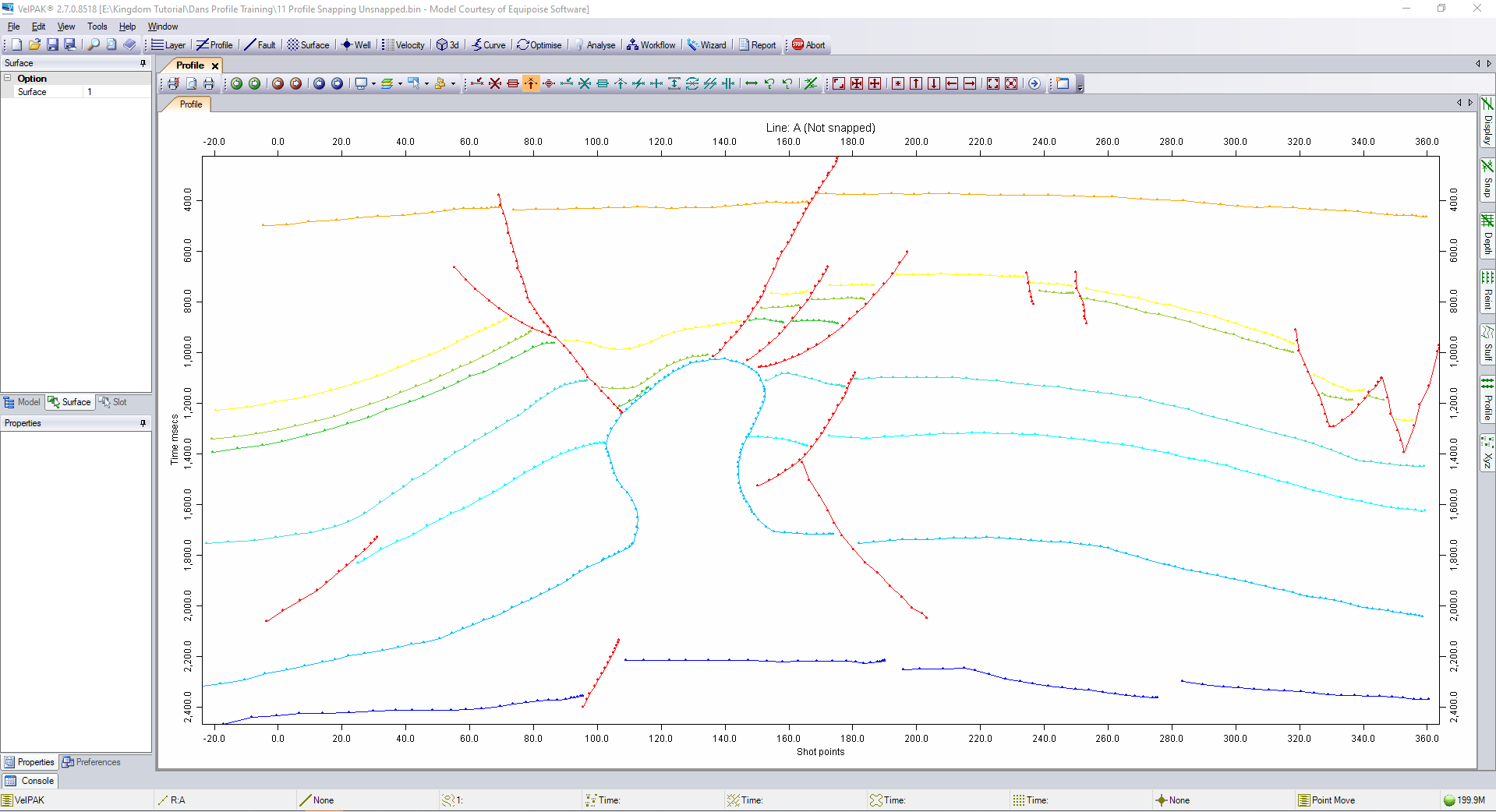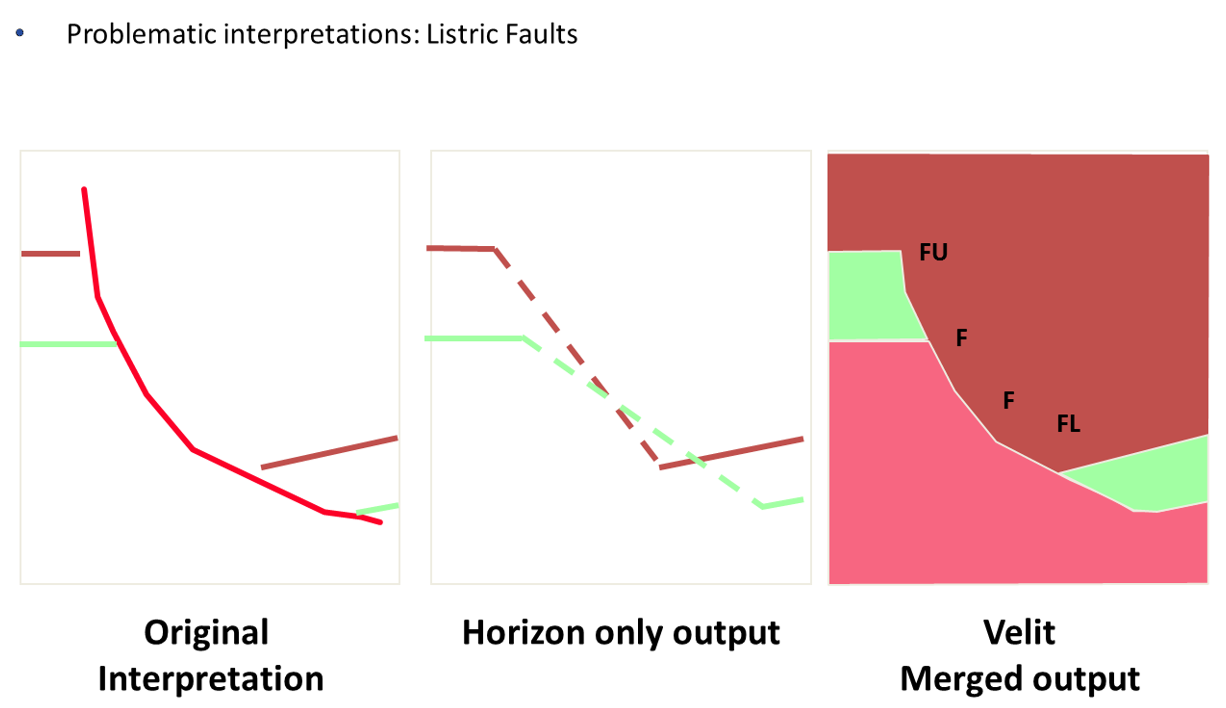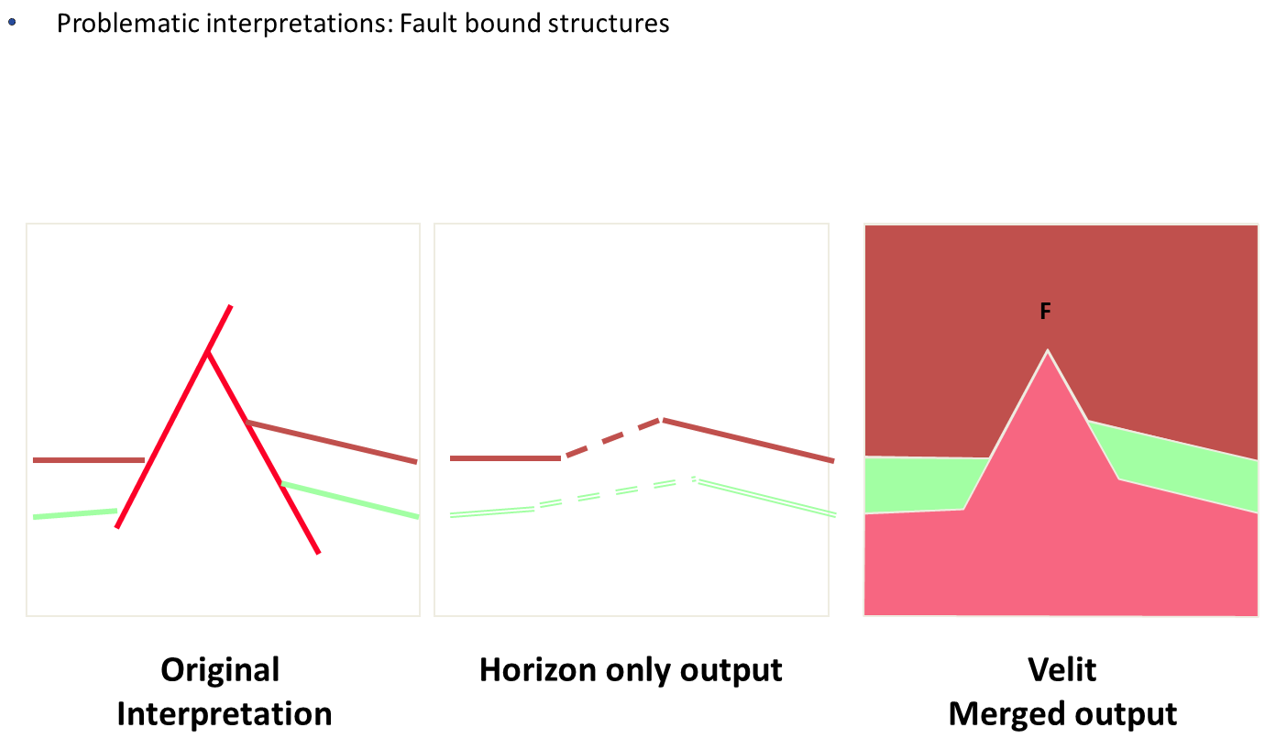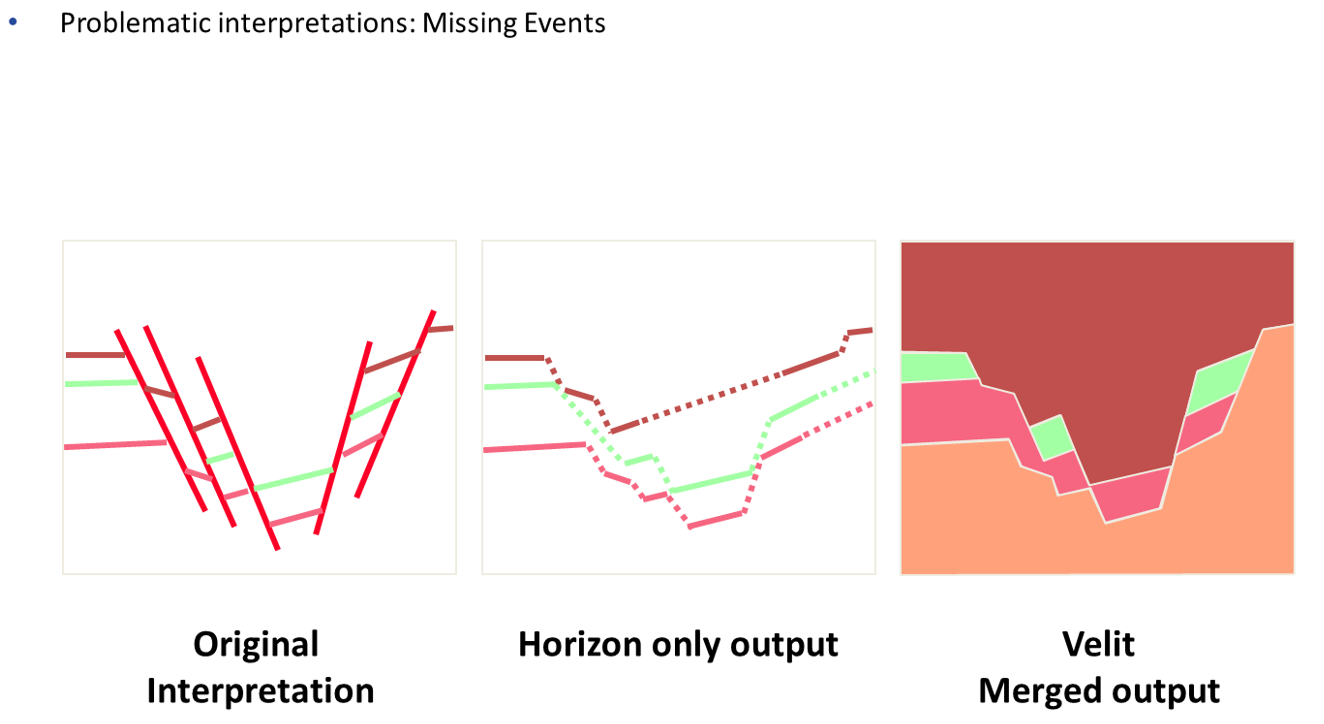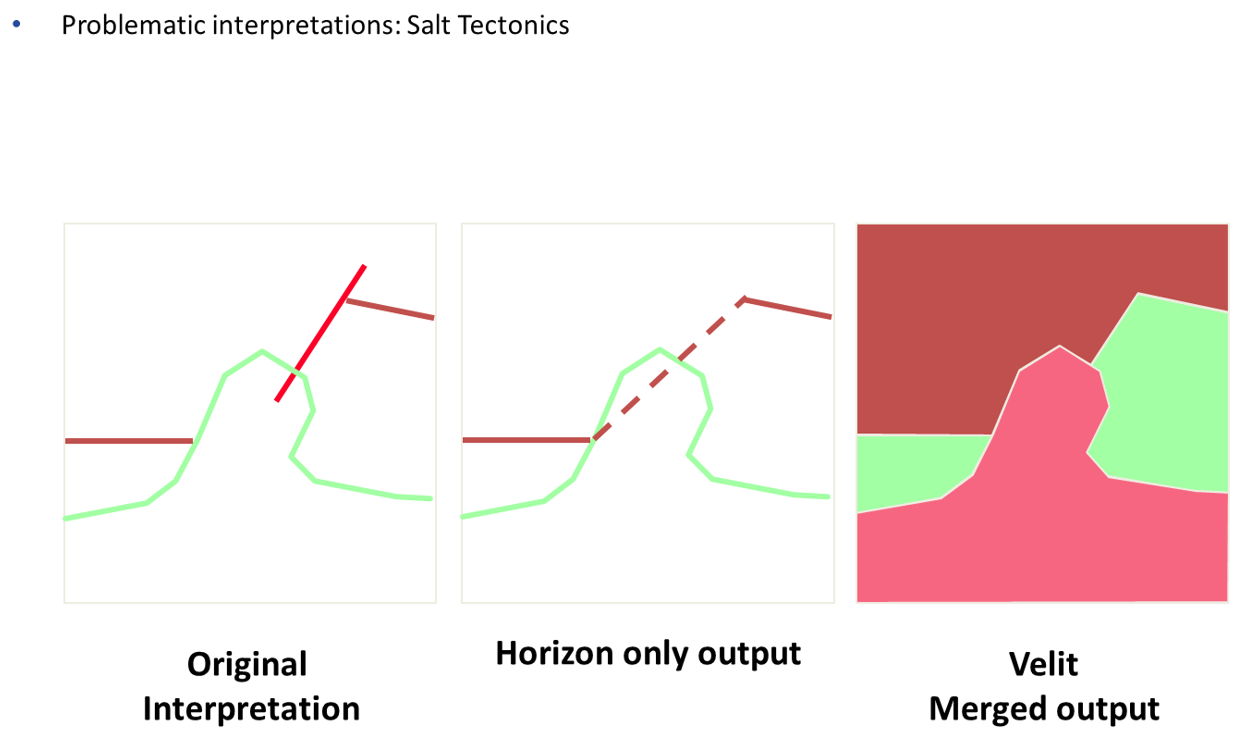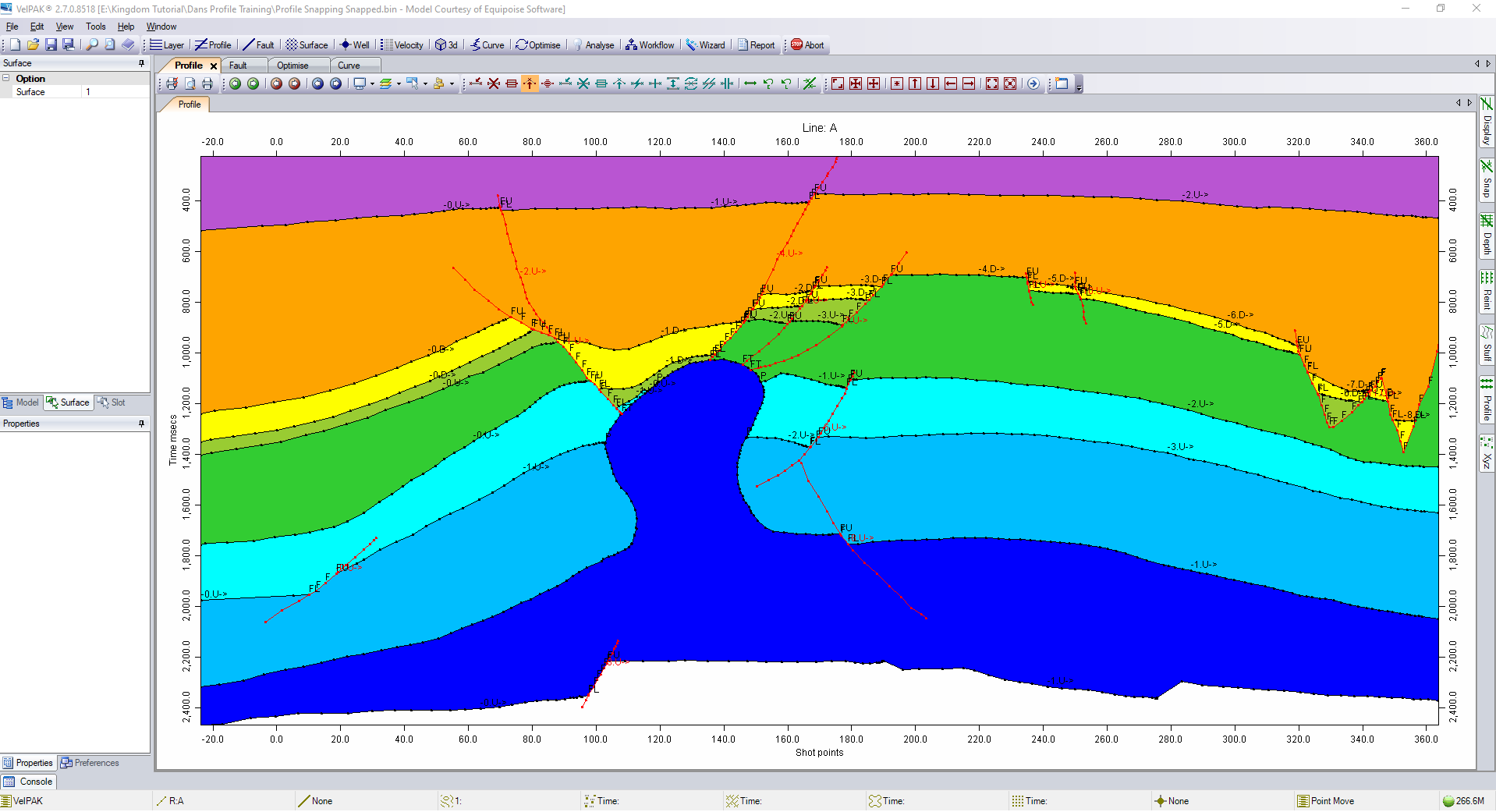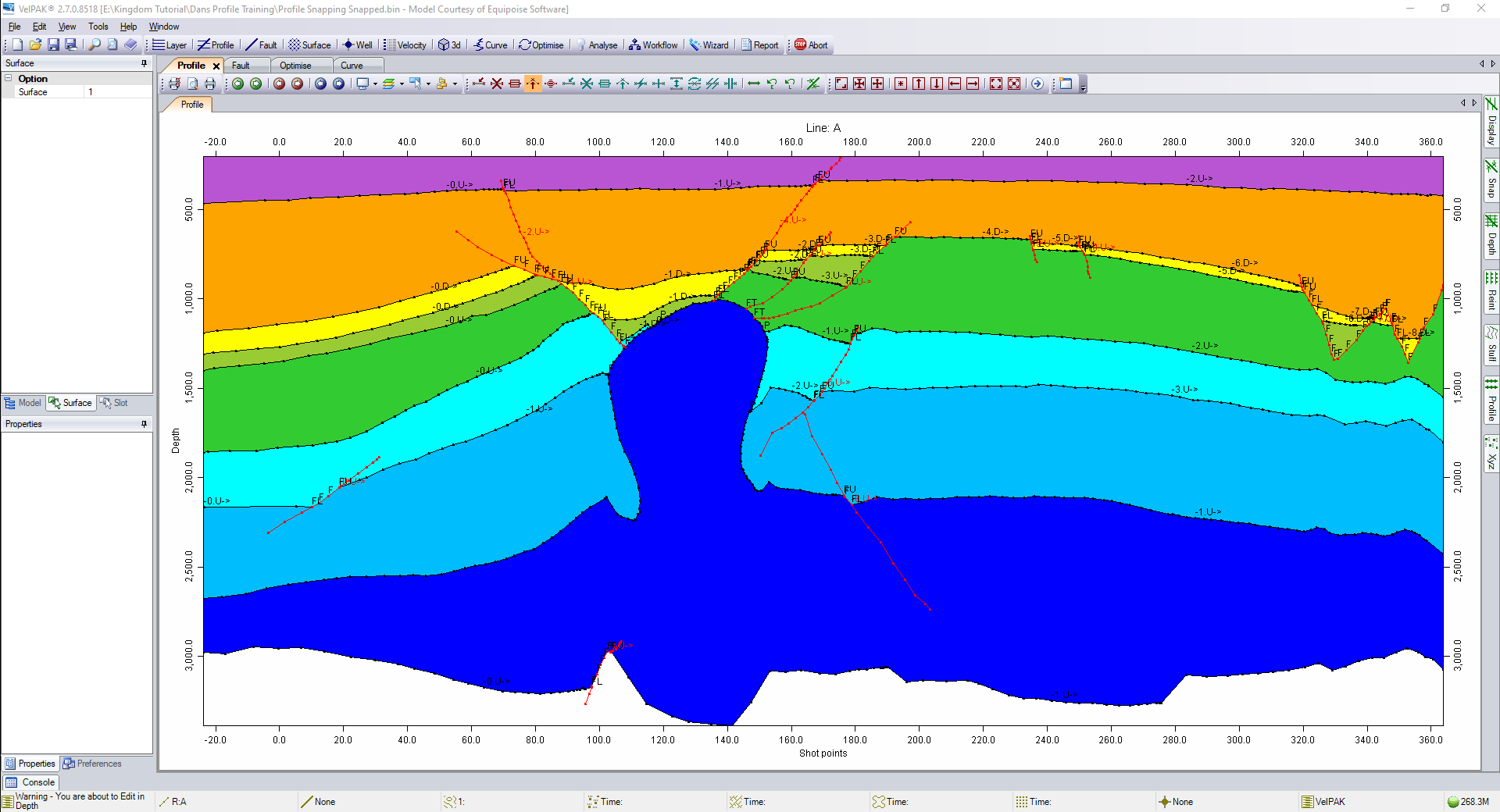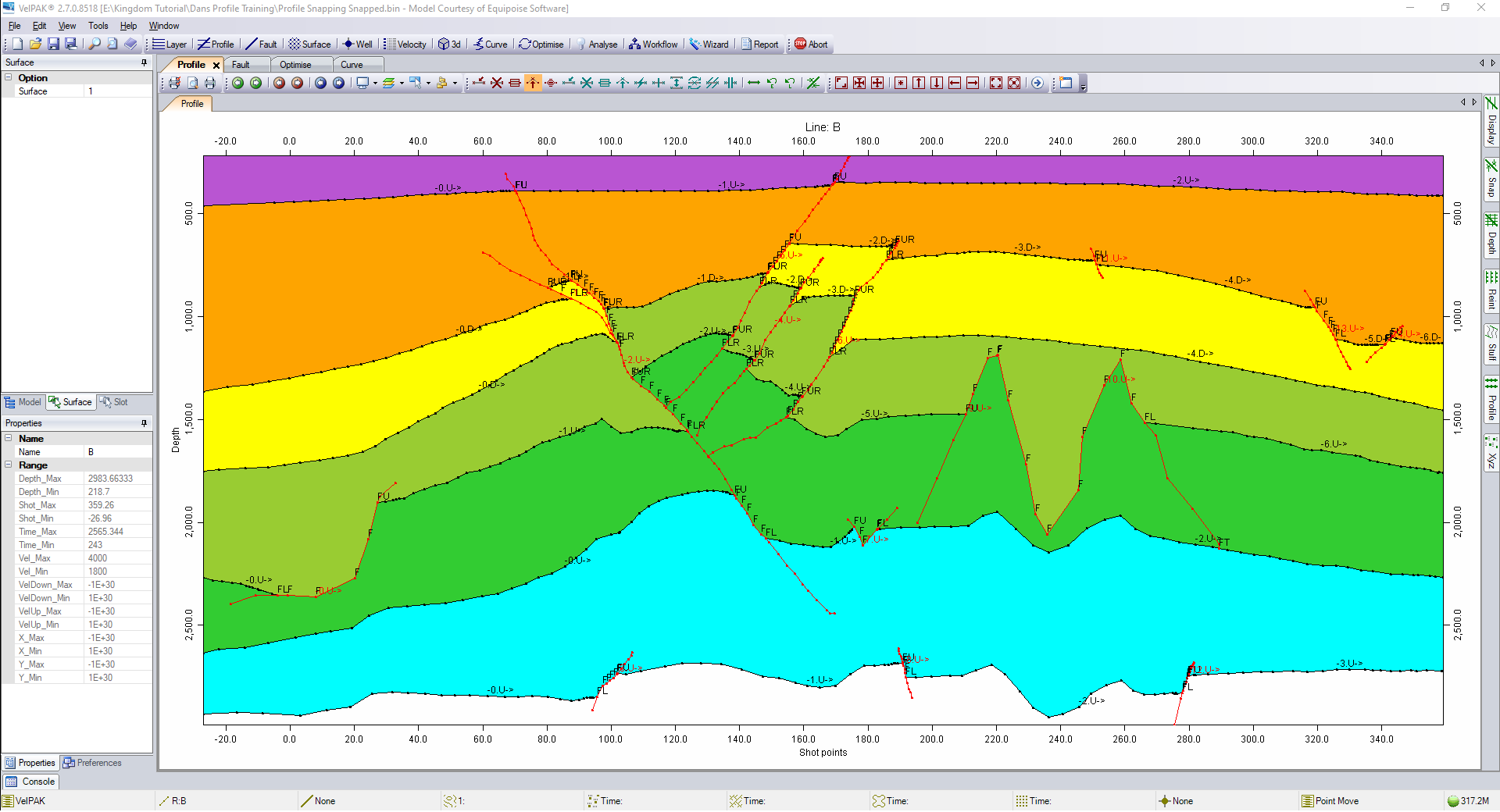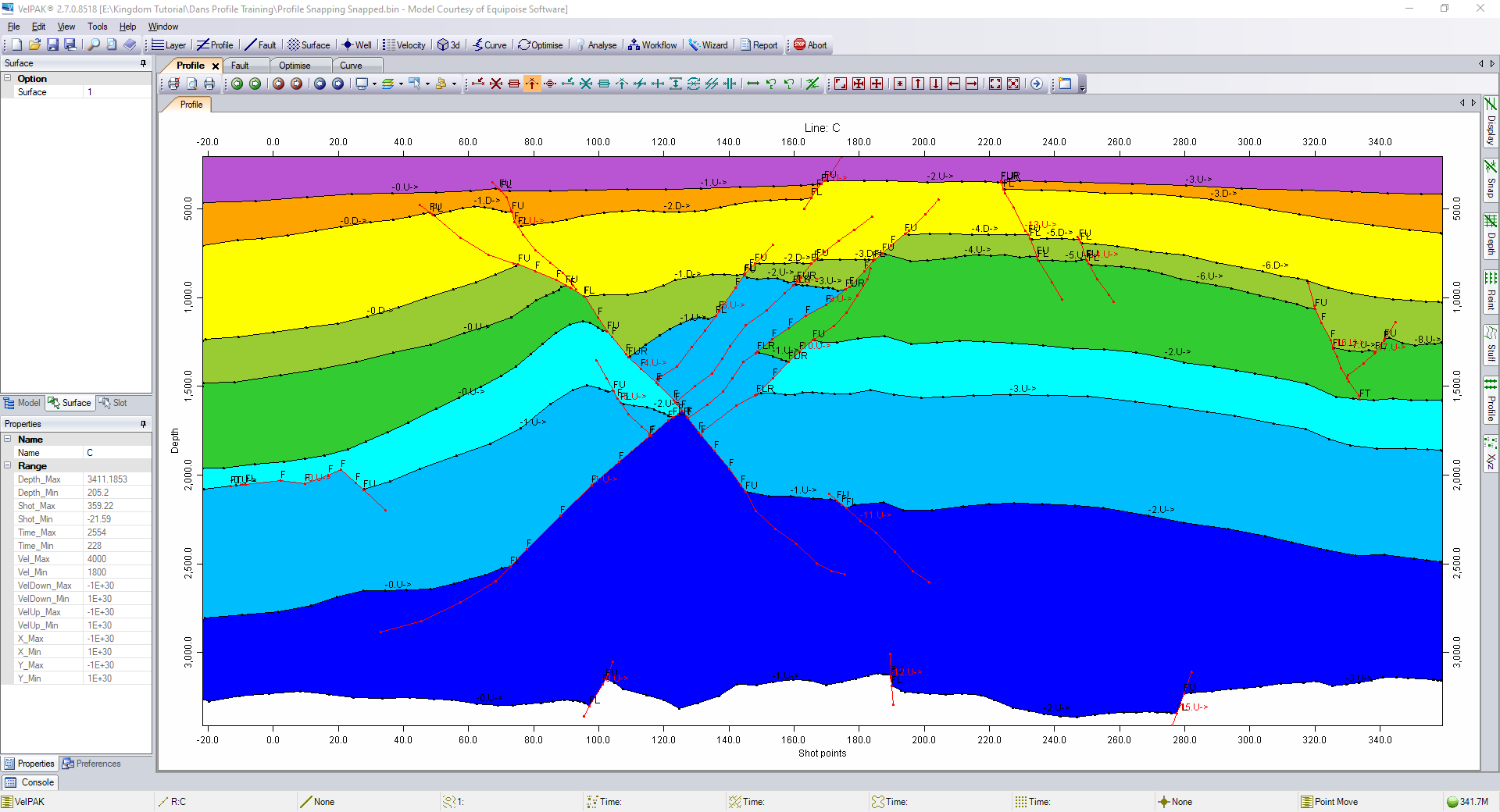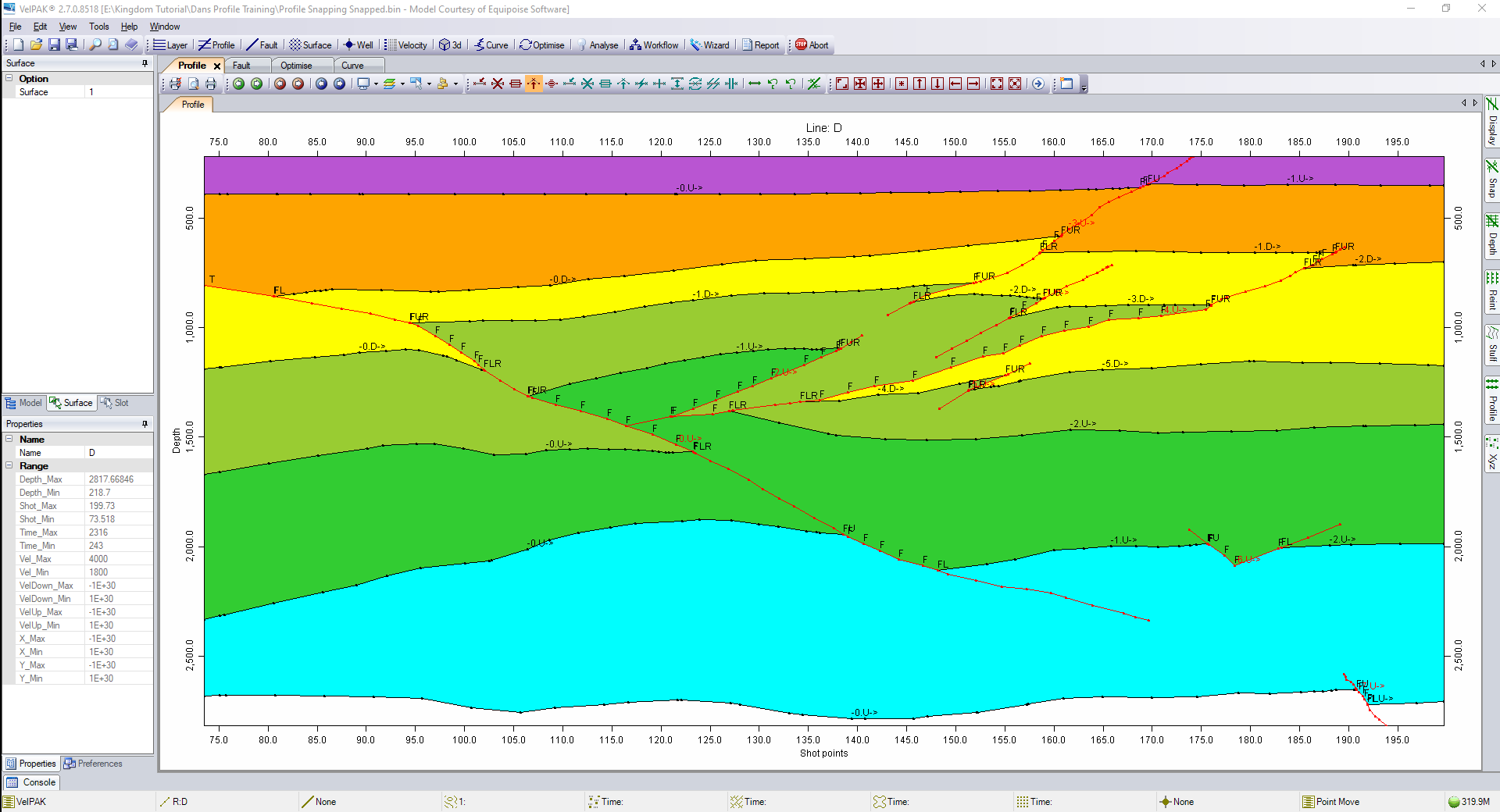The Profile module contained with Velit /VelPAK enables you to depth convert data of any geological complexity, including the ability to handle Multi-Z surfaces. This tool can be especially valuable for obtaining accuracy in depth for 2D data, or for portions of 3D volumes.
Data Conditioning Tools
One significant aspect of this workflow is the process of conditioning the data. The latest version of Velit/VelPAK no longer requires you to ‘Snap and Seal’ each 2D section, however if you do spend the time working to finely delineate the data in the time domain, you will effectively work to create a series of ‘Super Time Grids’ which can be especially useful to depth convert areas that cannot be presented by a simple surface. This software enables you to handle diapirs, reverse faulting, shallow gas, channels and intrusions can all these geological scenarios can be depth converted assuredly. There are a number of tools available to either adjust single points of the data, or entire segments and when you’re ready to complete the line, press the ‘Snap and Seal’ button.
Once the data is snapped in the time domain, the geology for all the layers in the model has been completely defined. You’ll be able to select the ‘Time Fill’ option to visualise the data as per the colours you’ve assigned to the layering in the well module, as you can see in the image below. You can note that the amount of time it can take to snap a section depends on the quality of the interpretation and faults that you input into the software. This can result in the process taking anywhere from 30 seconds to 5 minutes per line. As such this tool can be considered useful for working on a project with 250 or fewer lines, unless you have the time available to work on a more extensive dataset.
As you can see from these images above, Velit’s Merged Output encompasses both fault and horizon data to automatically compute geologically realistic models.
From Time To Depth
When you have worked through your 2D data, or through a number on InLine’s or XLine’s from a 3D volume, you will be then able to select any depth conversion function contained within Velit to select the velocity fill type per layer. You’ll work through each layer in sequence, with layer 2 being hung from layer 1, layer 3 being hung from layer 2, etc, until you complete the process by selecting an arbitrary velocity fill for the ‘basement layer’ under the last horizon.
You can then switch between the Time Fill option to the Depth Fill option to visualise the impact that the velocities have on your data. If you compare the two images above, it is evident that the shape of the salt diapir in the depth domain has significantly changed shape.
Often, the velocity field can be very complex. Making cross-section models in Velit’s Profile module allows you to quickly see how different velocities and structural forms impact the depth of your targets.
Creating profiles is also a great way for the interpreter to define the issues that the PSDM processor must address.
Velit’s Profile module also works with High Frequency data and is an ideal toolset for depth converting datasets used by the Offshore Wind industry. If you have poor data quality the software has been adapted so that you can still leverage the value of the toolset and work on non-snapped sections.
If you can’t currently perform this process in your existing software, then please get in touch with us now and we can arrange a demonstration and an evaluation licence for you to see the value when applied to your datasets.
If you’d like to know more about Velit, then click here. To contact us for a free evaluation, e-mail us on sales@equipoisesoftware.com.
The software is provided by S&P Global (who we partner with for Kingdom) with perpetual and subscription pricing available on request. We offer a series of Teams meetings throughout the evaluation to help you step up the learning curve and enable you to see results for yourself. We also provide a series of Depth Conversion training courses which you can click here to find out more.

